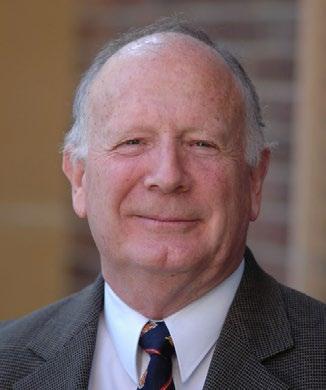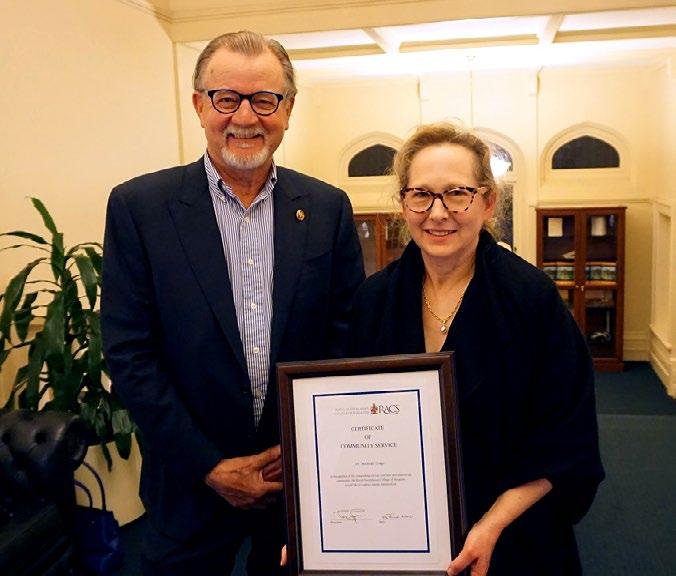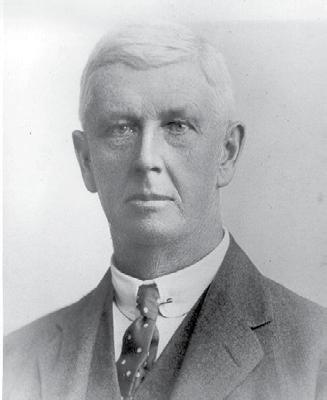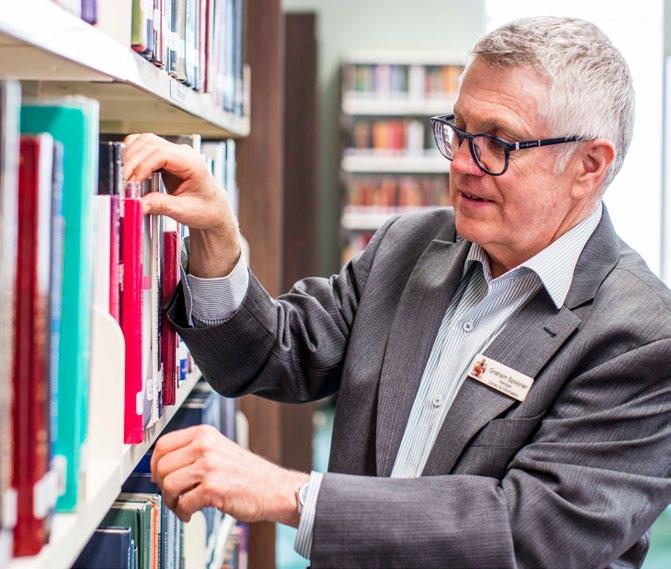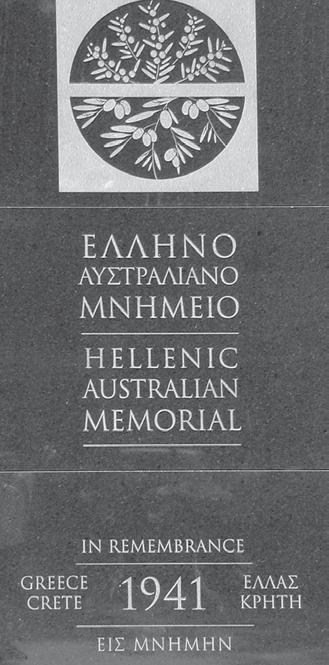
5 minute read
Case note review
Communication is the key to rational decision-making
Reviews of important surgical procedures help us improve outcomes. This is a case study selected by the ANZASM Committee for your information. Background An 89-year-old woman presented to hospital with symptomatic heart failure and constipation. Significantly, she had a history of rheumatic fever and, in 2005, had undergone a tissue mitral valve replacement and tricuspid annuloplasty. In recent years, she had developed structural deterioration of her bioprosthetic valve, which presented itself as increasing mitral stenosis. The degree of stenosis was now graded as severe. Although said to be living at home independently, she was becoming increasingly symptomatic with poor quality of life. Sequence of events The patient presented to a large regional public hospital with exertional dyspnoea and neck pain. A diagnosis of heart failure and constipation was made. After initial assessment the patient was transferred to a private hospital under the care of her usual cardiologist. The main underlying diagnosis was severe bioprosthetic mitral stenosis. She was treated symptomatically with aperients and changes to her heart failure medications with minimal improvement. The regional centre could offer no further treatment options, and a consultantto-consultant referral was made to a cardiologist at a large tertiary referral hospital for consideration of further valvular intervention. Following referral, the patient underwent a re-evaluation and the diagnosis of severe prosthetic mitral valve stenosis was confirmed, together with significant tricuspid regurgitation, severe right ventricular dysfunction, severe pulmonary hypertension, and grade 2 (out of 4) aortic regurgitation with aortic sclerosis. Other issues listed in the referral letter included possible angina, hypertension, atrial fibrillation on oral anticoagulant, a dual chamber permanent pacemaker, renal insufficiency with a glomerular filtration rate (GFR) of 35, bronchiectasis, osteoporosis and gastro-oesophageal reflux. The question of further surgical intervention was raised, and a surgical opinion was sought. The reviewing surgeon felt the option of redo surgery was out of the question as the risk was unacceptably high. Percutaneous valve replacement via a valve-in-valve technique was considered by the medical team, and the patient was reviewed by the structural heart team. The patient was placed on the pathway for a percutaneous valve replacement. The high risk of the procedure was explained and stressed to the patient and family. The patient insisted she proceed with the procedure as her symptoms were unacceptable to her. The procedure was scheduled and was carried out by cardiology with no surgical input. However, the procedure, although described as technically satisfactory by the cardiology team, was complicated by ventricular fibrillation and cardiac tamponade. An attempt at a percutaneous pericardial drain was made by the cardiology team and a subxiphoid approach quickly followed. A partial lower sternotomy was made by a surgical team summoned to the hybrid theatre by the cardiac arrest call. Although the pericardial collection was ultimately drained, a decision was made against further intervention. All resuscitation and active measures ceased. Areas of good practice The note keeping in both the regional centre and the tertiary referral centre was generally very good. The entries were contemporaneous, informative, and to the point. The sequence of events was able to be followed. Areas of practice questioned The issue of whether a complex intervention in an 89-year-old patient was appropriate was never raised. Providing medical management only does not appear to have been considered. The question of what long-term functional improvement could have been expected in a patient of such an advanced age does not appear to have ever been addressed. Attention was focused on the prosthetic mitral stenosis but no attention was paid to the correct heart issues.
Advertisement
The Cardiac Society of Australia and New Zealand (CSANZ) and the Australian and New Zealand Society of Cardiac and Thoracic Surgeons (ANZSCTS) have a position paper on percutaneous valves.1 In addition to specifying the credentials
and technical aspects required for individuals and institutions to perform the procedure, the two societies place emphasis on each institution establishing a ‘heart team’ to independently review patients being considered for a percutaneous valve. The aim is to ensure the suitability of the procedure for each patient. Patients should be fully investigated then presented at a meeting of the heart team before a recommendation is reached as to the most appropriate management, whether it be surgical valve replacement, percutaneous valve replacement, or ongoing medical management only. In addition, if a patient is accepted for percutaneous intervention, possible emergency surgical intervention in the case of misadventure needs to be documented. The surgical team must be made aware of the date and time of the procedure to ensure immediate availability of a surgical team and operating theatre. In this case, the patient was reviewed
Responsible approach to alcohol policy
The Royal Australasian College of Surgeons (RACS) has developed a Responsible Approach to Alcohol policy. This new policy mirrors our public advocacy work of highlighting the harm that alcohol can cause in the community, and to the health of individuals. Our workforce is unique in that it comprises paid employees and surgeons who offer their services pro-bono. It is essential for anyone representing the College to uphold the highest standards of behaviour when performing any service, whether paid or unpaid, within the workplace or at events, including after work hours. Please read the policy at tinyurl.com/y2ctl8r5 to find out more about our duty of care as an employer and our by the heart team registrar and other members of the team; however, there is no documentation of the case being formally presented at a heart team meeting. There is no documentation of the consensus opinion regarding further management, or the course of action in the event of procedural misadventure. The surgeons who operated on the patient were alerted to a problem by the emergency bell ringing in the hybrid theatre and were told the patient was for active management. Due to a combination of factors, the end result was expected. Summary This case reflects poor patient selection for intervention of any type, failure of cardiology teams to follow protocol, and failure to communicate with the surgical team called to help unprepared. This case presents governance issues and would benefit from a root cause analysis, if one has not already been done.
Professor Guy Maddern, Surgical Director of Research and Evaluation incorporating ASERNIP-S
REFERENCE
1. Walters DL, Webster M, Pasupati S, Walton A, Muller D, Stewart J, Williams M, MacIsaac A, Scalia G, Wilson M, El Gamel A, Clarke A, Bennetts J, Bannon P. Position statement for the operator and institutional requirements for a transcatheter aortic valve implantation (TAVI) program. Heart, Lung and Circulation 2015 March 01;24(3):219–223.
Please note: these cases are edited from ANZASM first-line or second-line assessments that have been generated by
expert surgeons in the field. approach to events and business meetings.
November Annual Academic Surgery Conference 2020
Date: Thursday 5 November 2020 Time: 9:00am to 5:00pm Australian Eastern Daylight Time
Venue: Virtual
Register: https://tinyurl.com/SAS2020Register
For more information: E: academic.surgery@surgeons.org T: +61 8 8219 0900 #SAS2020


